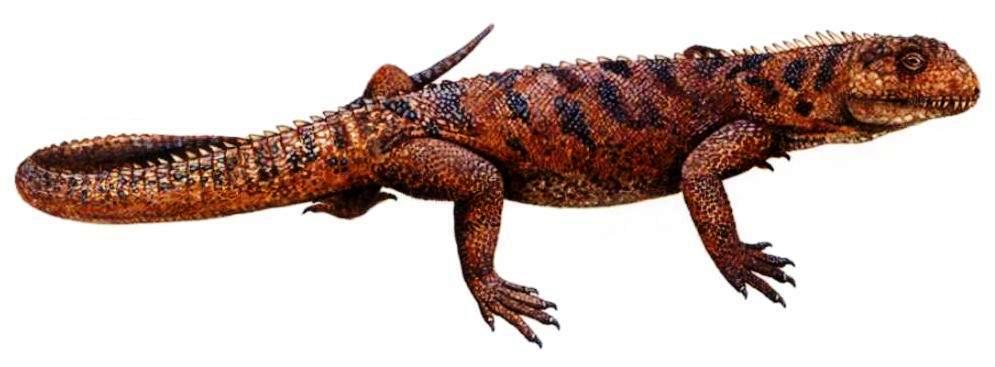Welcome to Acleistorhinus

Name Definition
Unclosed nose
Name Given By
Daly, 1969
Location
Oklahoma, U.S
Classification
Reptilia, Parareptilia, Procolophonomorpha, Acleistorhinidae
Size
the total body length is unknown but the skull is 3.5 cm long
Temporal Range
Kungurian - Roadian stages of the Permian, 273.6 - 271.6 million years ago
Ecological niche
small insectivore
Species/Sub Species
A. pteroticus
Diet
Indicated by its numerous, small and pointed teeth, Acleistorhinus is commonly believed to have been an insectivore
Introduction
Acleistorhinus is a genus of parareptiles that was discovered in Oklahoma and lived during the Permian. It is special for being the earliest anapsid (anapsids are a primitive group of reptiles that did not possess any fenestrae or skull openings near their temples) reptile discovered back from the Permian. Looking at the dentition, it is obvious that Acleistorhinus was an insectivore. While no canines are evident, the second maxillary tooth seems to be slightly larger than the rest. The skull seems triangular from the eyes leading to the tip of the head. The back of the skull was wider which caused the orbits (the sockets that hold your eyeballs) to be pushed forward in the head. This would have given it binocular vision and gave Acleistorhinus depth perception. This feature would have also helped in catching fast-moving prey like insects. Acleistorhinus is an exception however, as unlike most anapsids it has a lower temporal fenestra behind its eyes, which is superficially similar to synapsids, but it is instead a result of convergent evolution (convergent evolution is when two completely unrelated animals evolve the same adaptations to make them look similar because of similar environmental pressures).